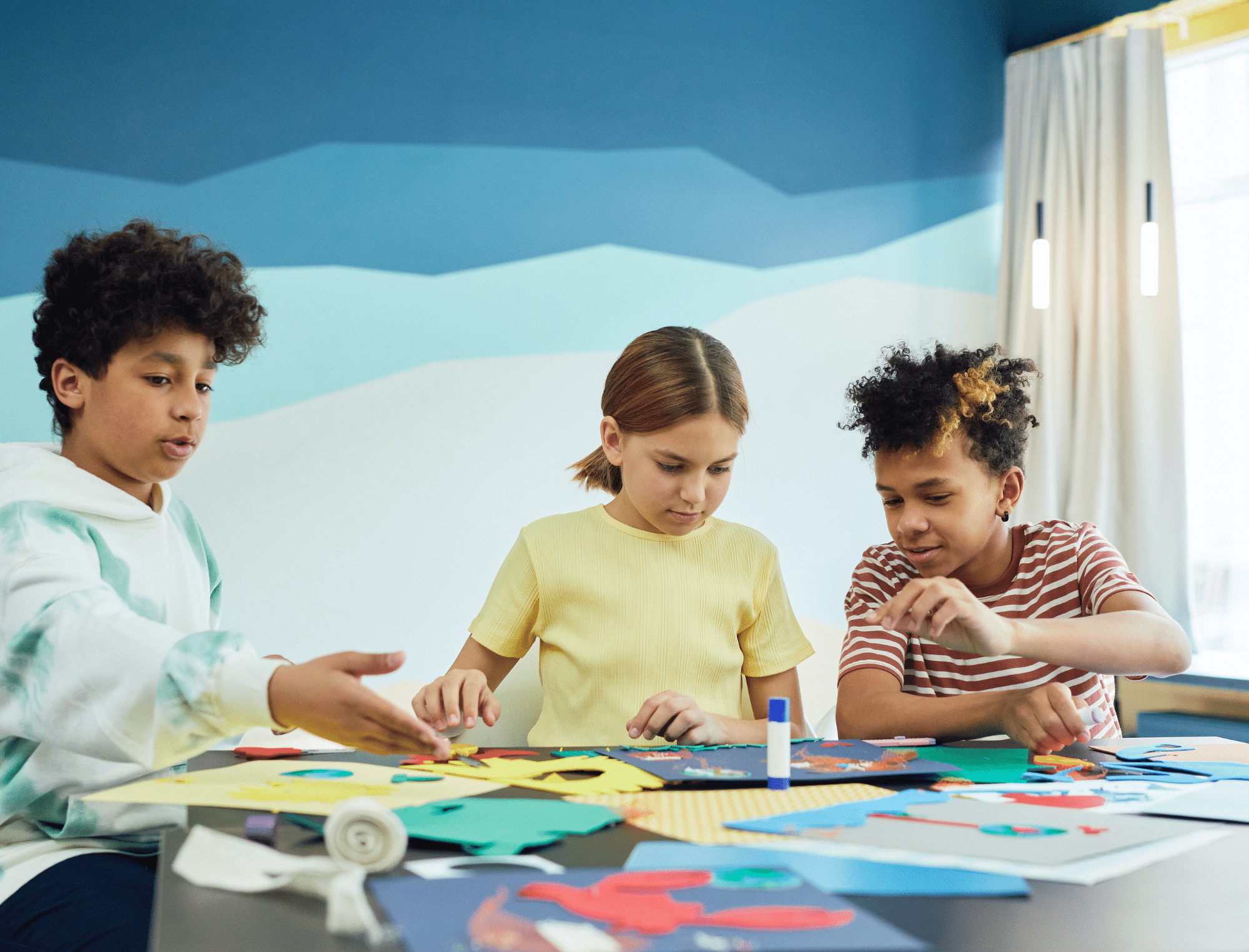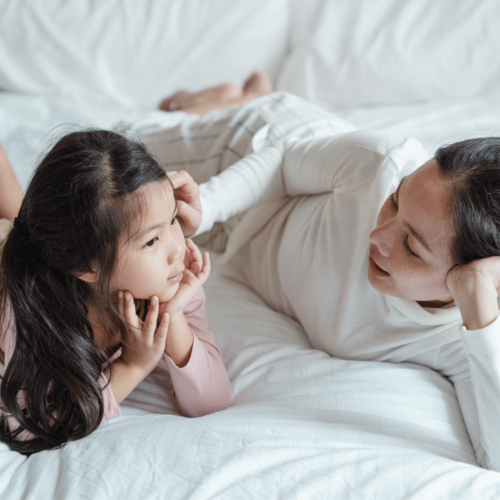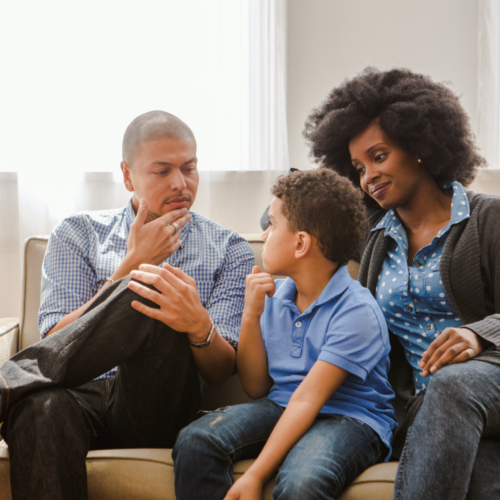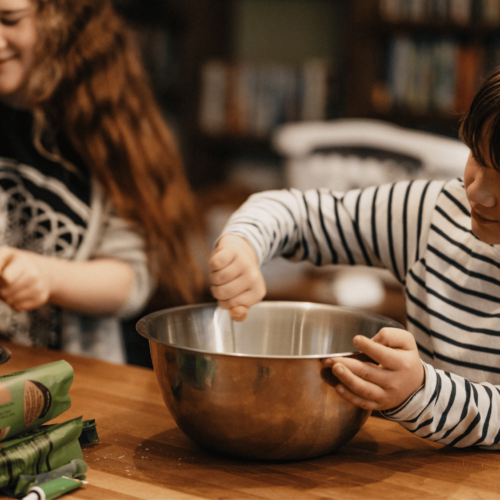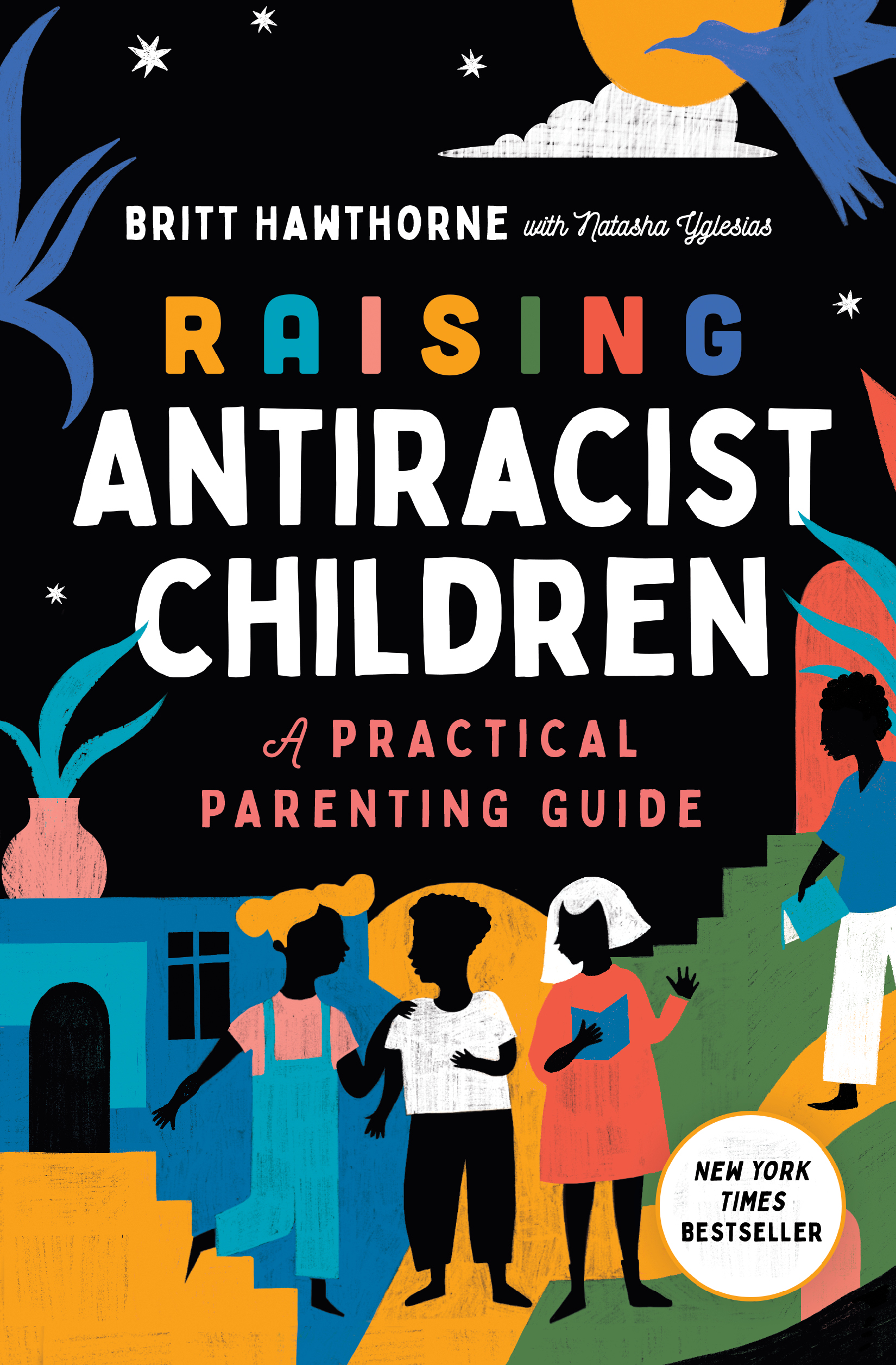Educators, I invite you to believe that it is within your power to create an antiracist classroom for your students to thrive in. The journey to get there involves not only setting up a classroom culture that encourages curiosity and equity but unpacking your own implicit bias to prevent contributing to the problem. Arriving at this article is the first step of many to intentionally foster space for your learners to grow, question, and explore the world around them through an antiracist lens. Keep reading to learn how to create an antiracist classroom environment for your learners.
They’re Not Too Young to Talk About Race
Many parents and educators tiptoe around the topic of race in the early stages of their children’s development. But studies show that this is actually the time when it is more impactful and important to discuss race.
“Differences do not create bias. Children learn prejudice from prejudice—not from learning about human diversity. It is how people respond to differences that teaches bias and fear.” – Julie Olsen Edwards
According to research shared by Children’s Community School, racial awareness begins as early as 3 months old.
- By 3 months old, babies begin to look at faces that match the race of their caregivers more than other races
- By the age of 2, children begin associating people’s behaviors with their race
- By 2 and a half years, children begin to use race to choose their friends
- By the ages of 4 and 5, children express outward racial prejudice the most
- By 5, Black and Latinx children show no preference for their race groups, while white children show strong preferences for whiteness
- By kindergarten, children hold many of the biased and racist views that adults hold, including the belief that certain races deserve a higher social status
“After age 9, racial attitudes tend to stay constant, unless the child experiences a life-changing event.” – Frances Aboud
When we do not discuss race with our children, they do not have guidance on how to interpret racism in our society. As a result, they are likely to become a mirror of our white dominant society.
Bias Is Still Present in Schools
Educators have a unique opportunity to help shape the worldview of their students. But all too often, teachers reinforce stereotypes with their own implicit bias.
Black students are still three times more likely than white students to be suspended or expelled. In some years, Black students have missed five times as many days of school as their white peers due to suspension. This kind of discrimination leads to what many people call the “school-to-prison nexus,” where the number of school suspensions a student receives, combined with socioeconomic status, residential segregation, and exposure to state-sanctioned violence, increases the chances learners will end up incarcerated.
It is so important that as educators, we are doing everything within our power to process our own implicit bias. Unchecked, we reinforce harmful stereotypes and narratives that limit the potential of Indigenous, Black, and learners of the global majority.
So, How Do We Build an Antiracist Classroom?
It takes time, dedication, and commitment to create an antiracist classroom. As antiracist educators, we want all learners to…
1. Create a Loving Community
Antiracist classrooms are loving, supportive communities that create space for all learners to be their full selves. Learners should feel loved and supported because of who they are. I recommend spending the first 6-9 weeks building community. Engage in activities, co-create community agreements, and focus on collective responsibility exercises and community solidarity.
Recommended Activity: “Ground Rules”
Start the school year off with this activity: Every new group of learners will have their own energy and culture. It’s important to honor who’s in our classroom by honoring their needs.
Ask learners:
- What do you need in this classroom to feel supported or safe?
- What do you need to learn?
- What do you want to happen every day or week?
- What do you not want to happen in your classroom?
For instance, learners might say, “I need quiet during reading time, time to move my body, to have bathroom breaks or a snack when I need it.” By having this conversation, you’re showing learners that this classroom is just as much theirs as it is yours. As a class, you can discuss what you’ll commit to doing and what won’t happen. Be honest and direct with learners, they’ll appreciate it.
2. Practice Self-Love
Students should feel not only that they are loved, but that they love themselves. We want to create a space where we affirm personal identity and social identity. We build self-confidence, family pride, and self-awareness by using accurate language.
Recommended Activity: “Two Truths and a Wish”
This activity is a play on “Two Truths and Lie.” It is an awesome community-building game without asking learners to lie to have fun. Allow the learner five minutes to think of two things that are true about them and one thing they wish to be true. This could be about their favorite foods, places they’ve visited, skills they’re learning to do, how they like to spend their time, or a fun fact. Break them into pairs or small groups to see who knows them best. This activity can be repeated throughout the school year.
3. Embrace People
People deserve dignity and respect, full stop. Not because we have something in common but because they’re people. However, I’ve witnessed too many educators either erasing differences or over-emphasizing similarities. Our goal is for learners to understand that people are different and they still deserve dignity and respect. Respect doesn’t mean charity or dominance, it means dignity and value. We must learn how to become more comfortable and confident discussing differences with our learners. In order for our learners to embrace people, we practice using accurate language for differences.
The way we discuss diverse skin tones with children is important. Learn how to use the rich language of browns to avoid racial fetishization.
Recommended Activity: “We’re Different”
Learners will identify how many ways they are different from each other. After pairing learners up and making sure they have something to write on and something to write with, ask them to make a list of differences between them. For first-timers I suggest five minutes, eventually, you can shorten the time. Learners can share about their personal identity (what makes them unique) or social identity (how they connect with larger groups) with their partner. Afterward, identify which pair had the most differences and invite them to share.
4. Relate to People as Individuals
According to Dr. Kira Banks, “stereotypes are shortcuts where we attribute traits or tendencies to an entire group (good or bad). They are important to be aware of because it’s easier for us to “notice” the stuff that fits our ideas of people.
In our classroom, help your students learn to identify stereotypes when they are being used, and relate to people as individuals instead. We provide multiple messages through books, materials, online programs, and games that support learners in identifying and disrupting stereotypes.
In Raising Antiracist Children: A Practical Parenting Guide, I write, “all stereotypes come at the expense of seeing a group of people as a monolithic group, denying their humanity, individuality, creativity, and imagination. More often than not, racial stereotypes are rooted in the belief that race is biological and genetic.” Caregivers looking for tools to discuss and disrupt stereotypes can reference my book.
Recommended Activity: Go to AMAZE
Watch one of my favorite videos from AMAZE to practice identifying and discussing stereotypes with your learners.
Lastly, always be ready to identify stereotypes and support critical thinking using these questions:
- What is the stereotype?
- How does this stereotype hurt or harm the community?
- How does it prevent us from understanding the community in reality?
5. Identify Harm and Unfairness
In an antiracist classroom, we help our children to understand what unfairness is, recognize it, and have the language to describe it. We help students understand that unfairness can show up on the individual level (e.g., biased speech) and on the systemic level (e.g., discrimination). We help our students understand the needs that people have to live, including physical needs, social acceptance, and safety.
When our children ask, “Why do those people live under a bridge?” how should we respond? Learn how to talk about houselessness with kids.
Classroom teachers, use Learning for Justice Social Justice Standards to guide your work. It’s broken into grade bands and even has child-friendly language.
6. Act Justly
When a student witnesses injustice, we want them to be equipped with the knowledge and skills on what to do. Students should feel empowered to act alone or with others against unfairness, prejudice, or racism. Remember, what you do is as important as what you say. As you practice activism, share your stories with your learners. Be open and honest about your experience.
Expect and practice advocating with your learners. Here are some of my favorite phrases to utilize in the classroom:
- If someone is making fun of someone: “We all get to be different.”
- If someone interrupts them: “Please don’t take my turn.”
- If someone said something wrong: “That’s not accurate. Let’s look it up.”
- If you witness someone being unkind: “You are being mean. And, that is not okay?”
- If you heard someone sharing a racist idea: “That’s rooted in racism.”
“Sometimes we are blessed with being able to choose the time, and the arena, and the manner of our revolution, but more usually we must do battle where we are standing.” — Audre Lorde
7. Hold Critical Conversations
A critical conversation needs to happen when someone has said something or done something that’s rooted in discrimination, harm, exclusion, or othering. Ask yourself, if this conversation doesn’t happen, will the ignorance and behavior persist or might I have the impact to change the outcome? Learn how to hold a critical conversation here.
8. Teach Language
Language matters because it informs the seriousness of a situation. Introduce and teach the definitions to help learners understand and move to action. Begin by defining the following words: racism, discrimination, stereotype, prejudice, and bias. And when your students uphold stereotypes, make sure to respond with curiosity, not shame.
Here are some definitions to get started:
- Bias: shortcuts our brains make to help us make faster decisions and organize all of the information we’re learning
- Prejudice: having opinions or ideas about a person without actually knowing them.
- Stereotypes: shortcuts where we attribute traits or tendencies to an entire group (good or bad)
- Discrimination: when people act on those negative opinions, assumptions, or attitudes (prejudices). It’s when we deny individuals or groups of people fair treatment
- Racism: personal prejudice, systemic misuse, and abuse of power
9. Learn Dynamics
We want our students to be able to recognize the dynamics of power and privilege—inside and outside an antiracist classroom. On the individual, group, and institutional level, help students understand privilege and process how they have been impacted by these dynamics. Learn more by reading, “Destigmatizing Privilege” by Liz Kleinrock.
“Privilege can be a sticky subject, but this teacher introduces it to her fourth-graders as a tool they can use to elevate others.” –Liz Kleinrock
10. Learn History
We want our students to be able to identify historical events, figures, and philosophies that belong to the history of social justice globally. Learning history honors the experiences of people who suffered due to white domination and celebrates the efforts of those who fought for change. Use books as tools for liberation.
Teaching for Change has carefully curated this booklist focused on people’s history and social justice books that have been adapted for young readers.
My personal favorites are:
You don’t need to wait until Juneteenth to celebrate and learn about its history. Learn how to celebrate Juneteenth with your family and friends.
Your Antiracist Classroom
When we commit to collectively talking about fairness, equality, and justice with young children, we begin to envision a world in which not only children but all people are treated with dignity; free from the burden of unfair assumptions based on a single characteristic. It becomes a world where we actively challenge racism and bias each and every day for a more just and compassionate world. Want more resources? Explore workshops and guidance for educators.

